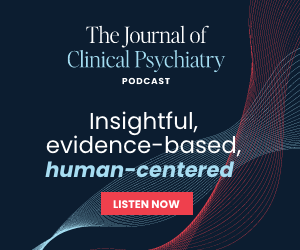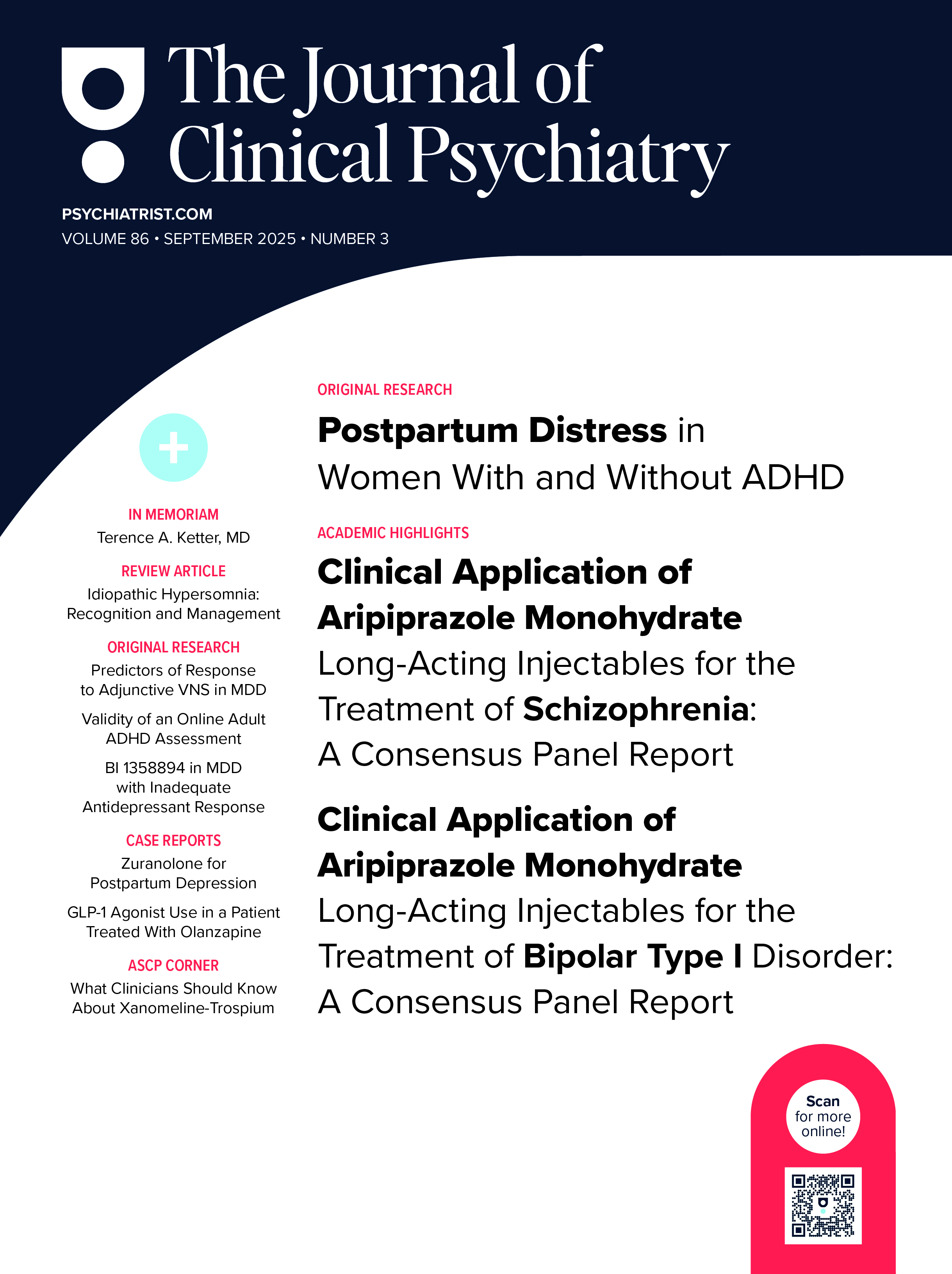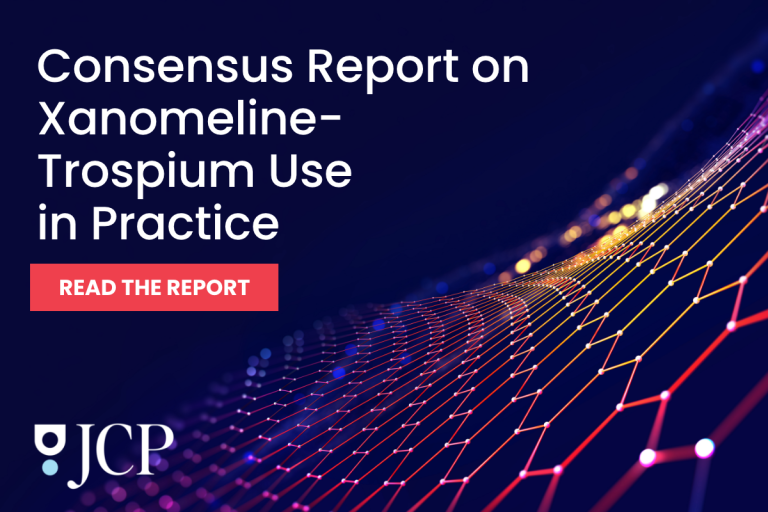ABSTRACT
Objective: To quantitatively synthesize the literature on the effects of repetitive transcranial magnetic stimulation (rTMS) on suicidal ideation (SI) in patients with treatment-resistant depression.
Data Sources: A literature search was conducted using PubMed, SCOPUS, Ovid, MEDLINE, Embase, and Web of Science from inception to January 11, 2021, for the keywords repetitive transcranial magnetic stimulation, suicidal ideation, suicidality, treatment-resistant depression, refractory depression, transcranial magnetic stimulation, and brain stimulation.
Study Selection: A total of 16 publications were eligible for inclusion. Studies were included that investigated the effects of rTMS in adolescents and/or adults 16 years or older diagnosed with unipolar or bipolar depression with suicidal ideation data before and after rTMS intervention.
Data Extraction: Data were extracted and managed using Covidence. Extracted data included authors, publication year, country of origin, study design, patient demographics, primary diagnosis, comorbidities, mean age, outcome assessment instruments, detailed stimulation parameters, sham control procedures, and any serious adverse events related to SI.
Results: A quantitative analysis of effect size using Hedges g was calculated for both randomized controlled trials and all other uncontrolled trials. We found a decrease in SI scores in randomized controlled trials (g = 0.158, 95% confidence interval [CI] = −0.078 to 0.393, P = .191), although the effect was not significant. There was a significant decrease in suicidal ideation scores for uncontrolled trials (g = 0.692, 95% CI = 0.463 to 0.922, P < .001).
Conclusions: Our findings suggest that rTMS may be an effective treatment for SI in individuals with treatment-resistant depression, although further investigation is warranted.
Members Only Content
This full article is available exclusively to Professional tier members. Subscribe now to unlock the HTML version and gain unlimited access to our entire library plus all PDFs. If you’re already a subscriber, please log in below to continue reading.
References (85)

- World Health Organization. Depression and Other Common Mental Disorders: Global Health Estimates. Geneva: World Health Organization; 2017.
- Mrazek DA, Hornberger JC, Altar CA, et al. A review of the clinical, economic, and societal burden of treatment-resistant depression: 1996–2013. Psychiatr Serv. 2014;65(8):977–987. PubMed CrossRef
- Fava M, Rush AJ, Wisniewski SR, et al. A comparison of mirtazapine and nortriptyline following two consecutive failed medication treatments for depressed outpatients: a STAR*D report. Am J Psychiatry. 2006;163(7):1161–1172. PubMed CrossRef
- Rush AJ, Warden D, Wisniewski SR, et al. STAR*D: revising conventional wisdom. CNS Drugs. 2009;23(8):627–647. PubMed
- Trivedi MH, Rush AJ, Wisniewski SR, et al; STAR*D Study Team. Evaluation of outcomes with citalopram for depression using measurement-based care in STAR*D: implications for clinical practice. Am J Psychiatry. 2006;163(1):28–40. PubMed CrossRef
- Voineskos D, Daskalakis ZJ, Blumberger DM. Management of treatment-resistant depression: challenges and strategies. Neuropsychiatr Dis Treat. 2020;16:221–234. PubMed CrossRef
- Ivanova JI, Birnbaum HG, Kidolezi Y, et al. Direct and indirect costs of employees with treatment-resistant and non-treatment-resistant major depressive disorder. Curr Med Res Opin. 2010;26(10):2475–2484. PubMed CrossRef
- Gibson TB, Jing Y, Smith Carls G, et al. Cost burden of treatment resistance in patients awith depression. Am J Manag Care. 2010;16(5):370–377. PubMed
- Olchanski N, McInnis Myers M, Halseth M, et al. The economic burden of treatment-resistant depression. Clin Ther. 2013;35(4):512–522. PubMed CrossRef
- Weissman CR, Hadas I, Dengdeng Y, et al. Predictors of change in suicidal ideation across treatment phases of major depressive disorder: analysis of the STAR*D data. Neuropsychopharmacology. 2021;46:1293–1299.
- Tanner JA, Hensel J, Davies PE, et al. Economic burden of depression and associated resource use in Manitoba, Canada. Can J Psychiatry. 2020;65(5):338–346. PubMed CrossRef
- American Psychiatric Association. Diagnostic and Statistical Manual of Mental Disorders. Fifth Edition. Washinton, DC: American Psychiatric Association; 2013.
- Miret M, Ayuso-Mateos JL, Sanchez-Moreno J, et al. Depressive disorders and suicide: epidemiology, risk factors, and burden. Neurosci Biobehav Rev. 2013;37(10 Pt 1):2372–2374. PubMed CrossRef
- Bernal M, Haro JM, Bernert S, et al; ESEMED/MHEDEA Investigators. Risk factors for suicidality in Europe: results from the ESEMED study. J Affect Disord. 2007;101(1-3):27–34. PubMed CrossRef
- World Health Organization. Preventing suicide: a global imperative. WHO website. https://www.who.int/mental_health/suicide-prevention/exe_summary_english.pdf. 2014. Accessed March 29, 2020.
- Hantouche E, Angst J, Azorin JM. Explained factors of suicide attempts in major depression. J Affect Disord. 2010;127(1–3):305–308. PubMed CrossRef
- Cox Lippard ET, Johnston JA, Blumberg HP. Neurobiological risk factors for suicide: insights from brain imaging. Am J Prev Med. 2014;47(suppl 2):S152–S162. PubMed CrossRef
- Copeland WE, Goldston DB, Costello EJ. Adult associations of childhood suicidal thoughts and behaviors: a prospective, longitudinal analysis. J Am Acad Child Adolesc Psychiatry. 2017;56(11):958–965.e4. PubMed CrossRef
- QuickStats: Suicide Rates*,† for Teens Aged 15–19 Years, by Sex—United States, 1975–2015. MMWR Morb Mortal Wkly Rep. 2017;66(30):816. PubMed CrossRef
- King CA, Arango A, Ewell Foster C. Emerging trends in adolescent suicide prevention research. Curr Opin Psychol. 2018;22:89–94. PubMed CrossRef
- Zalsman G, Hawton K, Wasserman D, et al. Suicide prevention strategies revisited: 10-year systematic review. Lancet Psychiatry. 2016;3(7):646–659. PubMed CrossRef
- Fink M, Kellner CH, McCall WV. The role of ECT in suicide prevention. J ECT. 2014;30(1):5–9. PubMed CrossRef
- Kellner CH, Fink M, Knapp R, et al. Relief of expressed suicidal intent by ECT: a consortium for research in ECT study. Am J Psychiatry. 2005;162(5):977–982. PubMed CrossRef
- Smith KA, Cipriani A. Lithium and suicide in mood disorders: updated meta-review of the scientific literature. Bipolar Disord. 2017;19(7):575–586. PubMed CrossRef
- Roberts E, Cipriani A, Geddes JR, et al. The evidence for lithium in suicide prevention. Br J Psychiatry. 2017;211(6):396. PubMed CrossRef
- Grunebaum MF, Galfalvy HC, Choo TH, et al. Ketamine for rapid reduction of suicidal thoughts in major depression: a midazolam-controlled randomized clinical trial. Am J Psychiatry. 2018;175(4):327–335. PubMed CrossRef
- Bustin J, Rapoport MJ, Krishna M, et al. Are patients’ attitudes towards and knowledge of electroconvulsive therapy transcultural? a multi-national pilot study. Int J Geriatr Psychiatry. 2008;23(5):497–503. PubMed CrossRef
- Weir D. The media’s damaging impact on public perception of electroconvulsive therapy. Healthy Debate website. https://healthydebate.ca/opinions/the-medias-damaging-impact-on-public-perception-of-electroconvulsive-therapy. 2013. Accessed March 29, 2020.
- Brakemeier EL, Berman R, Prudic J, et al. Self-evaluation of the cognitive effects of electroconvulsive therapy. J ECT. 2011;27(1):59–66. PubMed CrossRef
- Sackeim HA, Prudic J, Fuller R, et al. The cognitive effects of electroconvulsive therapy in community settings. Neuropsychopharmacology. 2007;32(1):244–254. PubMed CrossRef
- McKnight RF, Adida M, Budge K, et al. Lithium toxicity profile: a systematic review and meta-analysis. Lancet. 2012;379(9817):721–728. PubMed CrossRef
- Gitlin M. Lithium side effects and toxicity: prevalence and management strategies. Int J Bipolar Disord. 2016;4(1):27. PubMed CrossRef
- Dadiomov D, Lee K. The effects of ketamine on suicidality across various formulations and study settings. Ment Health Clin. 2019;9(1):48–60. PubMed CrossRef
- Bartoli F, Wlkinson ST. Ketamine and esketamine for suicidal ideation: recent progress and practical issues. Aust N Z J Psychiatry. 2020;54(2):206–207. PubMed CrossRef
- Downar J, Geraci J, Salomons TV, et al. Anhedonia and reward-circuit connectivity distinguish nonresponders from responders to dorsomedial prefrontal repetitive transcranial magnetic stimulation in major depression. Biol Psychiatry. 2014;76(3):176–185. PubMed CrossRef
- Lipsman N, Sankar T, Downar J, et al. Neuromodulation for treatment-refractory major depressive disorder. CMAJ. 2014;186(1):33–39. PubMed CrossRef
- George MS, Lisanby SH, Sackeim HA. Transcranial magnetic stimulation: applications in neuropsychiatry. Arch Gen Psychiatry. 1999;56(4):300–311. PubMed CrossRef
- Chung SW, Hoy KE, Fitzgerald PB. Theta-burst stimulation: a new form of TMS treatment for depression? Depress Anxiety. 2015;32(3):182–192. PubMed CrossRef
- McClintock SM, Reti IM, Carpenter LL, et al; National Network of Depression Centers rTMS Task Group; American Psychiatric Association Council on Research Task Force on Novel Biomarkers and Treatments. Consensus recommendations for the clinical application of repetitive transcranial magnetic stimulation (rTMS) in the treatment of depression. J Clin Psychiatry. 2018;79(1):35–48. PubMed CrossRef
- O’Reardon JP, Solvason HB, Janicak PG, et al. Efficacy and safety of transcranial magnetic stimulation in the acute treatment of major depression: a multisite randomized controlled trial. Biol Psychiatry. 2007;62(11):1208–1216. PubMed CrossRef
- Blumberger DM, Vila-Rodriguez F, Thorpe KE, et al. Effectiveness of theta burst versus high-frequency repetitive transcranial magnetic stimulation in patients with depression (THREE-D): a randomised non-inferiority trial. Lancet. 2018;391(10131):1683–1692. PubMed CrossRef
- Suppa A, Huang YZ, Funke K, et al. Ten years of theta burst stimulation in humans: established knowledge, unknowns and prospects. Brain Stimul. 2016;9(3):323–335. PubMed CrossRef
- Berlim MT, Van den Eynde F, Tovar-Perdomo S, et al. Augmenting antidepressants with deep transcranial magnetic stimulation (DTMS) in treatment-resistant major depression. World J Biol Psychiatry. 2014;15(7):570–578. PubMed CrossRef
- McGirr A, Van den Eynde F, Tovar-Perdomo S, et al. Effectiveness and acceptability of accelerated repetitive transcranial magnetic stimulation (rTMS) for treatment-resistant major depressive disorder: an open label trial. J Affect Disord. 2015;173:216–220. PubMed CrossRef
- Cole EJ, Stimpson KH, Bentzley BS, et al. Stanford Accelerated Intelligent Neuromodulation Therapy for treatment-resistant depression. Am J Psychiatry. 2020;177(8):716–726. PubMed CrossRef
- George MS, Raman R, Benedek DM, et al. A two-site pilot randomized 3 day trial of high dose left prefrontal repetitive transcranial magnetic stimulation (rTMS) for suicidal inpatients. Brain Stimul. 2014;7(3):421–431. PubMed CrossRef
- Desmyter S, Duprat R, Baeken C, et al. Accelerated intermittent theta burst stimulation for suicide risk in therapy-resistant depressed patients: a randomized, sham-controlled trial. Front Hum Neurosci. 2016;10:480. PubMed CrossRef
- Moher D, Liberati A, Tetzlaff J, et al; PRISMA Group. Preferred reporting items for systematic reviews and meta-analyses: the PRISMA statement. J Clin Epidemiol. 2009;62(10):1006–1012. PubMed CrossRef
- Hamilton M. A rating scale for depression. J Neurol Neurosurg Psychiatry. 1960;23(1):56–62. PubMed CrossRef
- Beck AT, Kovacs M, Weissman A. Assessment of suicidal intention: the Scale for Suicide Ideation. J Consult Clin Psychol. 1979;47(2):343–352. PubMed CrossRef
- Higgins JPTTJ, Chandler J, Cumpston M, et al. In: Welch VA, ed. Cochrane Handbook for Systematic Review of Interventions. 6.1 ed. Cochrane; 2020.
- Cochran WG. The combination of estimates from different experiments. Biometrics. 1954;10(1):101–129. CrossRef
- Borenstein M, Hedges L., Higgins J, et al. Comprehensive Meta-Analysis Version 3. Englewood, NJ: Biostat; 2013.
- R: A Language and Environment for Statistical Computing [computer program]. R Foundation for Statistical Computing, Vienna, Austria. 2020.
- Yesavage JA, Fairchild JK, Mi Z, et al; VA Cooperative Studies Program Study Team. Effect of repetitive transcranial magnetic stimulation on treatment-resistant major depression in US Veterans: a randomized clinical trial. JAMA Psychiatry. 2018;75(9):884–893. PubMed CrossRef
- Pan F, Shen Z, Jiao J, et al. Neuronavigation-guided rTMS for the treatment of depressive patients with suicidal ideation: a double-blind, randomized, sham-controlled trial. Clin Pharmacol Ther. 2020;108(4):826–832. PubMed CrossRef
- Keshtkar M, Ghanizadeh A, Firoozabadi A. Repetitive transcranial magnetic stimulation versus electroconvulsive therapy for the treatment of major depressive disorder, a randomized controlled clinical trial. J ECT. 2011;27(4):310–314. PubMed CrossRef
- Rao V, Bechtold K, McCann U, et al. Low-frequency right repetitive transcranial magnetic stimulation for the treatment of depression after traumatic brain injury: a randomized sham-controlled pilot study. J Neuropsychiatry Clin Neurosci. 2019;31(4):306–318. PubMed CrossRef
- Hadley D, Anderson BS, Borckardt JJ, et al. Safety, tolerability, and effectiveness of high doses of adjunctive daily left prefrontal repetitive transcranial magnetic stimulation for treatment-resistant depression in a clinical setting. J ECT. 2011;27(1):18–25. PubMed CrossRef
- Bloch Y, Grisaru N, Harel EV, et al. Repetitive transcranial magnetic stimulation in the treatment of depression in adolescents: an open-label study. J ECT. 2008;24(2):156–159. PubMed CrossRef
- Fitzgerald PB, Hoy KE, Elliot D, et al. Accelerated repetitive transcranial magnetic stimulation in the treatment of depression. Neuropsychopharmacology. 2018;43(7):1565–1572. PubMed CrossRef
- Weissman CR, Blumberger DM, Brown PE, et al. Bilateral repetitive transcranial magnetic stimulation decreases suicidal ideation in depression. J Clin Psychiatry. 2018;79(3):17m11692. PubMed CrossRef
- Abdelnaim MA, Langguth B, Deppe M, et al. Anti-suicidal efficacy of repetitive transcranial magnetic stimulation in depressive patients: a retrospective analysis of a large sample. Front Psychiatry. 2020;10:929. PubMed CrossRef
- Croarkin PE, Nakonezny PA, Deng ZD, et al. High-frequency repetitive TMS for suicidal ideation in adolescents with depression. J Affect Disord. 2018;239:282–290. PubMed CrossRef
- Ozcan S, Gica S, Gulec H. Suicidal behavior in treatment resistant major depressive disorder patients treated with transmagnetic stimulation (TMS) and its relationship with cognitive functions. Psychiatry Res. 2020;286:112873. PubMed CrossRef
- Pan F, Li D, Wang X, et al. Neuronavigation-guided high-dose repetitive transcranial magnetic stimulation for the treatment of depressive adolescents with suicidal ideation: a case series. Neuropsychiatr Dis Treat. 2018;14:2675–2679. PubMed CrossRef
- Berlim MT, McGirr A, Rodrigues Dos Santos N, et al. Efficacy of theta burst stimulation (TBS) for major depression: an exploratory meta-analysis of randomized and sham-controlled trials. J Psychiatr Res. 2017;90:102–109. PubMed CrossRef
- Bozzay ML, Primack J, Barredo J, et al. Transcranial magnetic stimulation to reduce suicidality—review and naturalistic outcomes. J Psychiatr Res. 2020;125:106–112. PubMed CrossRef
- Serafini G, Pompili M, Belvederi Murri M, et al. The effects of repetitive transcranial magnetic stimulation on cognitive performance in treatment-resistant depression. A systematic review. Neuropsychobiology. 2015;71(3):125–139. PubMed CrossRef
- Padberg F, Brem AK, Palm U, et al. Discovering the individual brain: brain stimulation in psychiatry: editorial I to the supplement from the 2nd European conference on brain stimulation in psychiatry. Eur Arch Psychiatry Clin Neurosci. 2017;267(suppl 2):109–112. PubMed CrossRef
- Fitzgerald PB, Hoy K, McQueen S, et al. A randomized trial of rTMS targeted with MRI based neuro-navigation in treatment-resistant depression. Neuropsychopharmacology. 2009;34(5):1255–1262. PubMed CrossRef
- Fox MD, Halko MA, Eldaief MC, et al. Measuring and manipulating brain connectivity with resting state functional connectivity magnetic resonance imaging (fcMRI) and transcranial magnetic stimulation (TMS). Neuroimage. 2012;62(4):2232–2243. PubMed CrossRef
- Drysdale AT, Grosenick L, Downar J, et al. Resting-state connectivity biomarkers define neurophysiological subtypes of depression. Nat Med. 2017;23(1):28–38. PubMed CrossRef
- Lefaucheur JP, André-Obadia N, Antal A, et al. Evidence-based guidelines on the therapeutic use of repetitive transcranial magnetic stimulation (rTMS). Clin Neurophysiol. 2014;125(11):2150–2206. PubMed CrossRef
- George MS. Transcranial magnetic stimulation for the treatment of depression. Expert Rev Neurother. 2010;10(11):1761–1772. PubMed CrossRef
- Sun Y, Farzan F, Mulsant BH, et al. Indicators for remission of suicidal ideation following magnetic seizure therapy in patients with treatment-resistant depression. JAMA Psychiatry. 2016;73(4):337–345. PubMed CrossRef
- Uher R, Farmer A, Maier W, et al. Measuring depression: comparison and integration of three scales in the GENDEP study. Psychol Med. 2008;38(2):289–300. PubMed CrossRef
- Desseilles M, Perroud N, Guillaume S, et al. Is it valid to measure suicidal ideation by depression rating scales? J Affect Disord. 2012;136(3):398–404. PubMed CrossRef
- Baeken C. Accelerated rTMS: a potential treatment to alleviate refractory depression. Front Psychol. 2018;9:2017. PubMed CrossRef
- King CA, Kramer AC. Intervention research with youths at elevated risk for suicide: meeting the ethical and regulatory challenges of informed consent and assent. Suicide Life Threat Behav. 2008;38(5):486–497. PubMed CrossRef
- Posner K, Brown GK, Stanley B, et al. The Columbia-Suicide Severity Rating Scale: initial validity and internal consistency findings from three multisite studies with adolescents and adults. Am J Psychiatry. 2011;168(12):1266–1277. PubMed CrossRef
- Santen G, Gomeni R, Danhof M, et al. Sensitivity of the individual items of the Hamilton Depression Rating Scale to response and its consequences for the assessment of efficacy. J Psychiatr Res. 2008;42(12):1000–1009. PubMed CrossRef
- Evans KR, Sills T, DeBrota DJ, et al. An item response analysis of the Hamilton Depression Rating Scale using shared data from two pharmaceutical companies. J Psychiatr Res. 2004;38(3):275–284. PubMed CrossRef
- Sun Y, Blumberger DM, Mulsant BH, et al. Magnetic seizure therapy reduces suicidal ideation and produces neuroplasticity in treatment-resistant depression. Transl Psychiatry. 2018;8(1):253. PubMed CrossRef
- Oquendo MA, Sullivan GM, Sudol K, et al. Toward a biosignature for suicide. Am J Psychiatry. 2014;171(12):1259–1277. PubMed CrossRef




